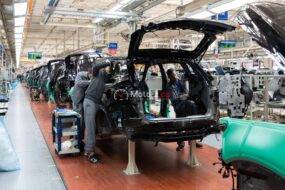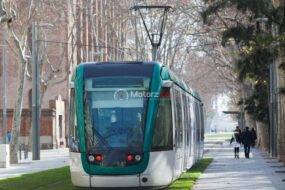In an era where environmental concerns are at the forefront of global discussions, it’s crucial for individuals to take responsibility for their actions, even in seemingly mundane aspects of life, such as Eco-Friendly Driving Habits Reduce Your Carbon Footprint habits not only help reduce but also contribute to cleaner air, lower fuel costs, and a healthier planet. In this article, we will explore various strategies and tips that can help you drive in an environmentally conscious way.
Choose an Eco-Friendly Vehicle
The first and most significant step toward eco-friendly driving is choosing the right vehicle. Electric cars, hybrids, and fuel-efficient models are designed to produce fewer emissions and consume less fuel. While purchasing such a vehicle may require an initial investment, the long-term benefits in terms of reduced fuel costs and environmental impact make it a wise choice.
Regular Vehicle Maintenance
Proper vehicle maintenance is crucial for eco-friendly driving. Regularly servicing your car ensures that it operates efficiently, which means it consumes less fuel and emits fewer pollutants. This includes checking and changing the oil, maintaining tire pressure, and getting tune-ups as needed.
Reduce Idling
Leaving your engine running while parked or waiting consumes unnecessary fuel and emits harmful pollutants. If you anticipate being stationary for more than a minute, it’s more eco-friendly to turn off your engine and restart it when you’re ready to move.
Carpooling and Ride-Sharing
Consider carpooling or using ride-sharing services to reduce the number of vehicles on the road. Sharing rides not only cuts down on emissions but also saves money and reduces traffic congestion.
Use Public Transportation
Whenever possible, opt for public transportation like buses, subways, or trains. Mass transit systems are generally more energy-efficient and produce fewer emissions per passenger compared to individual vehicles.
Plan Your Trips
Efficient trip planning can significantly reduce your carbon footprint. Combine errands into one trip, choose the shortest route, and avoid congested areas during rush hours to minimize time spent idling in traffic.
Drive Smoothly
Avoid sudden acceleration and aggressive driving. Smooth acceleration and braking can improve your vehicle’s fuel efficiency and reduce wear and tear on the engine. Maintaining a consistent speed on the highway can improve your fuel efficiency. Use cruise control when appropriate to help keep your speed steady and avoid unnecessary speed fluctuations.
Reduce Unnecessary Weight
Remove unnecessary items from your vehicle’s trunk or roof racks. Extra weight increases fuel consumption, so keeping your car free of excess baggage can improve your eco-friendly driving habits.
Consider Eco-Friendly Fuel Options
If you’re not driving an electric vehicle, consider using cleaner fuel options like ethanol blends or biodiesel when available. These fuels produce fewer emissions than traditional gasoline or diesel.
Turn Off Air Conditioning
Using air conditioning can increase your fuel consumption. On mild days, consider rolling down the windows for natural ventilation, and only use air conditioning when necessary. Combining multiple short trips into one can save fuel and reduce emissions. It reduces the warm-up phase of your vehicle, where it consumes more fuel.
Eco-Friendly Driving Apps
There are various smartphone apps available that can help you track your driving habits and provide feedback on how to drive more eco-consciously. Consider using one of these apps to monitor your progress.
Conclusion
Eco-Friendly Driving habits are a small yet impactful way to reduce your carbon footprint and contribute to a healthier planet. By choosing the right vehicle, maintaining it properly, and adopting eco-conscious driving practices, you can make a positive difference in the environment while also saving money on fuel. Remember, every mile you drive with eco-friendliness in mind is a mile closer to a sustainable future for all.





